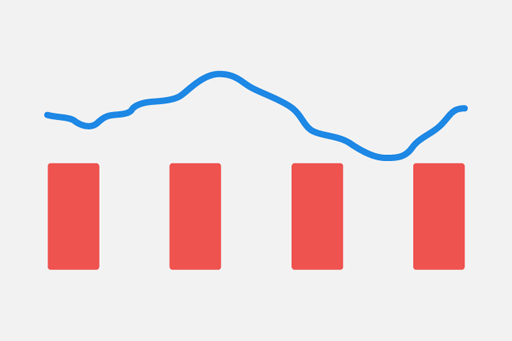2.3.2 Visualising textures in a score
Hopefully, you are starting to see how the different lines of music relate to each other on the page when listening, and you are starting to relate different types of sound to different visual patterns and shapes.

Block chords look different to combinations of fast and slow notes, or to melodies weaving together. Identifying these textures will help you understand the construction of the music and how it is written down and represented in the score. Figure 9 shows how someone might imagine what a melody with chords might look like. Your vision might be different, but some kind of visualisation will help you understand how textures work.
How would you visualise a round or a piece of music with interweaving melodies? Think of a piece of music you know and try to visualise what the texture might look like.
